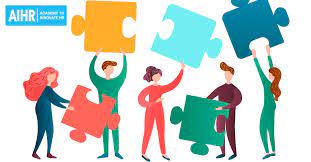The Power of Group Dynamics
Groups play a significant role in our lives, from our families and friendships to our workplaces and communities. The dynamics within a group can greatly influence its members and the outcomes of their interactions. Understanding the power of group dynamics is essential for effective collaboration and successful teamwork.
What is a Group?
A group is a collection of individuals who come together for a common purpose, shared interest, or mutual goal. Groups can vary in size, structure, and function, but they all involve interactions among members that shape the group’s identity and behavior.
The Benefits of Group Interaction
Group interactions offer numerous benefits:
- Collaboration: Groups provide opportunities for collaboration and pooling of diverse skills and perspectives.
- Social Support: Being part of a group can offer emotional support, encouragement, and a sense of belonging.
- Learning and Growth: Groups can facilitate learning through sharing knowledge, experiences, and feedback.
- Increased Creativity: Group discussions and brainstorming sessions can spark creativity and innovative ideas.
- Motivation: Working within a group can boost motivation through shared goals and accountability.
Challenges in Group Dynamics
While groups offer many advantages, they also present challenges:
- Conflict: Differences in opinions or personalities can lead to conflicts within the group.
- Communication Issues: Poor communication can hinder effective collaboration and understanding among members.
- Groupthink: The tendency to conform or suppress dissenting opinions may limit critical thinking within the group.
- Leadership Dynamics: Establishing effective leadership roles and decision-making processes is crucial for group success.
Fostering Positive Group Dynamics
To promote positive group dynamics, it’s important to:
- Cultivate Trust: Build trust among members through open communication, respect, and reliability.
9 Benefits of Group Work: From Enhanced Collaboration to a Strong Sense of Community
- Enhanced collaboration opportunities
- Diverse perspectives and ideas
- Social support and camaraderie
- Increased motivation and accountability
- Opportunities for skill-sharing and learning
- Boosted creativity through brainstorming
- Efficient division of labor and tasks
- Collective problem-solving capabilities
- Sense of belonging and community
Challenges in Group Dynamics: Navigating Conflict, Communication, and Cohesion
- Conflict can arise due to differences in opinions or personalities within the group.
- Poor communication may lead to misunderstandings and hinder effective collaboration.
- Group dynamics can sometimes result in groupthink, limiting critical thinking and creativity.
- Establishing leadership roles and decision-making processes can be challenging and lead to power struggles.
- Cliques or subgroups forming within the larger group may create divisions and affect overall cohesion.
Enhanced collaboration opportunities
Enhanced collaboration opportunities are a key benefit of group dynamics. By bringing together individuals with diverse skills, perspectives, and experiences, groups create a fertile ground for collaboration. Members can leverage each other’s strengths, share knowledge, and work together towards common goals more effectively than they could on their own. This collaborative environment fosters creativity, innovation, and problem-solving capabilities, ultimately leading to more robust and successful outcomes. Through active engagement and cooperation within the group, members can achieve greater results than they could achieve individually.
Diverse perspectives and ideas
The diversity of perspectives and ideas within a group is a valuable asset that can lead to innovative solutions and creative problem-solving. When individuals with different backgrounds, experiences, and expertise come together, they bring unique viewpoints to the table. This diversity fosters rich discussions, challenges conventional thinking, and encourages members to consider alternative approaches. By embracing diverse perspectives, groups can tap into a wealth of knowledge and creativity, ultimately enhancing their ability to tackle complex issues and achieve meaningful outcomes.
Social support and camaraderie
Social support and camaraderie are invaluable benefits of being part of a group. Within a group setting, individuals can find comfort, encouragement, and a sense of belonging. Whether facing challenges or celebrating successes, the presence of supportive peers fosters a feeling of community and shared experience. This social support network not only provides emotional reassurance but also strengthens relationships and enhances overall well-being. The camaraderie that emerges within a group creates a supportive environment where members can lean on each other, share experiences, and build lasting connections based on mutual understanding and empathy.
Increased motivation and accountability
Increased motivation and accountability are key benefits of group dynamics. When individuals work within a group setting, they often feel a sense of responsibility towards their team members, which motivates them to perform at their best. Knowing that others are relying on them can boost individuals’ commitment to achieving shared goals and meeting deadlines. This collective accountability fosters a supportive environment where team members hold each other to high standards, leading to increased productivity and overall success in collaborative endeavors.
Opportunities for skill-sharing and learning
Within a group setting, one notable advantage is the ample opportunities for skill-sharing and learning. Members can exchange knowledge, expertise, and experiences, fostering a collaborative environment where individuals can enhance their skills and broaden their understanding of various subjects. This dynamic exchange not only benefits the individual members but also contributes to the overall growth and success of the group as a whole.
Boosted creativity through brainstorming
Group dynamics can significantly boost creativity through brainstorming sessions. When individuals come together in a group setting to share ideas and perspectives, the collective energy and diverse viewpoints can spark innovative solutions and creative breakthroughs that may not have been possible in isolation. Brainstorming within a group allows for the exploration of different angles, encourages thinking outside the box, and fosters a collaborative environment where ideas can build upon one another, ultimately leading to enhanced creativity and problem-solving capabilities.
Efficient division of labor and tasks
An important benefit of groups is the efficient division of labor and tasks. By assigning specific responsibilities to different members based on their skills and expertise, groups can streamline processes, increase productivity, and achieve goals more effectively. This division of labor allows individuals to focus on their strengths, leading to a more efficient use of resources and a greater overall output. Additionally, sharing tasks among group members promotes collaboration and fosters a sense of teamwork, ultimately contributing to the group’s success.
Collective problem-solving capabilities
Groups offer a significant advantage in their collective problem-solving capabilities. When individuals come together in a group setting, they can leverage diverse perspectives, experiences, and skills to tackle complex issues more effectively. Collaborative problem-solving within a group allows for brainstorming, critical analysis, and innovative solutions that may not have been possible through individual efforts alone. By pooling their collective knowledge and expertise, group members can generate creative ideas, consider multiple viewpoints, and ultimately arrive at more comprehensive and well-rounded solutions to challenging problems.
Sense of belonging and community
The sense of belonging and community that groups provide is a powerful pro that enhances individual well-being and collective strength. Being part of a group fosters connections, promotes social support, and creates a shared identity that gives members a feeling of inclusion and acceptance. This sense of belonging not only boosts morale and motivation but also encourages collaboration, empathy, and a shared commitment to common goals. In a group setting, individuals feel valued, understood, and connected to something greater than themselves, fostering a strong sense of community that can lead to positive outcomes for both individuals and the group as a whole.
Conflict can arise due to differences in opinions or personalities within the group.
Conflict within a group can be a significant challenge that arises from varying opinions or personalities among its members. Differences in perspectives, values, or communication styles can lead to misunderstandings and tensions within the group. When conflicts are not effectively addressed, they can escalate and negatively impact collaboration, decision-making, and overall group dynamics. Resolving conflicts requires open communication, active listening, empathy, and a willingness to find common ground despite differing viewpoints. By acknowledging and addressing conflicts constructively, groups can transform challenges into opportunities for growth and stronger relationships among members.
Poor communication may lead to misunderstandings and hinder effective collaboration.
Poor communication within a group can be a significant hindrance to effective collaboration and teamwork. When members fail to communicate clearly or openly, misunderstandings can arise, leading to confusion, conflict, and inefficiency. Without clear channels of communication, important information may be lost or misinterpreted, impacting decision-making processes and overall productivity. To overcome this con of group dynamics, it is crucial for members to prioritize effective communication strategies, such as active listening, clear articulation of ideas, and regular feedback mechanisms. By fostering a culture of open and transparent communication, groups can mitigate misunderstandings and enhance their collaborative efforts towards shared goals.
Group dynamics can sometimes result in groupthink, limiting critical thinking and creativity.
Group dynamics can sometimes lead to groupthink, a phenomenon where the desire for harmony or conformity within a group results in a lack of critical thinking and creativity. When group members prioritize agreement over independent thought, innovative ideas may be suppressed, and potential risks or flaws in decisions may go unnoticed. Groupthink can hinder the ability of a group to consider alternative perspectives and make well-informed choices, ultimately limiting the group’s effectiveness and potential for growth. It is essential for groups to actively encourage diverse viewpoints and constructive dissent to avoid falling into the trap of groupthink.
Establishing leadership roles and decision-making processes can be challenging and lead to power struggles.
Establishing leadership roles and decision-making processes within a group can be challenging as it often leads to power struggles among members. In situations where individuals vie for control or influence, conflicts can arise, hindering the group’s ability to make cohesive decisions. Power struggles may result in divisions within the group, lack of trust in leadership, and delays in progress towards common goals. Effective management of leadership dynamics and decision-making processes is essential to navigate these challenges and foster a harmonious working environment within the group.
Cliques or subgroups forming within the larger group may create divisions and affect overall cohesion.
Cliques or subgroups forming within the larger group can be a significant challenge as they may lead to divisions and impact the overall cohesion of the group. When certain members form exclusive circles or alliances, it can create feelings of exclusion among others and hinder effective communication and collaboration. These cliques may prioritize their own interests over the goals of the larger group, leading to conflicts and a breakdown in unity. Addressing and managing these subgroups is essential to fostering a more inclusive and cohesive environment within the group.



